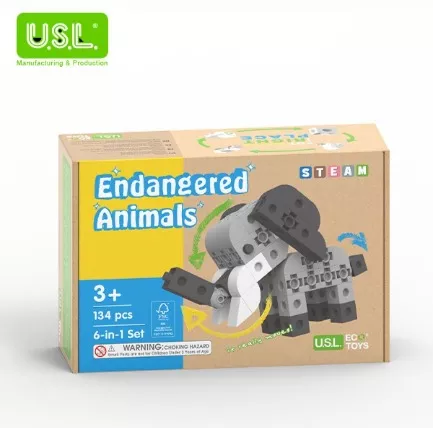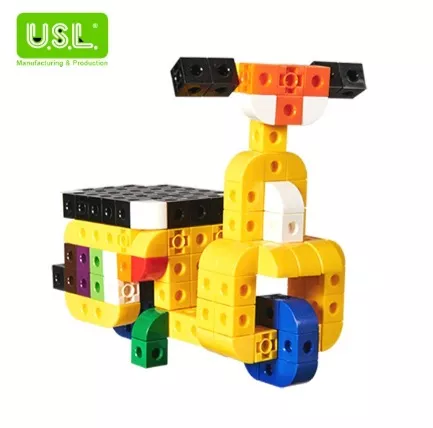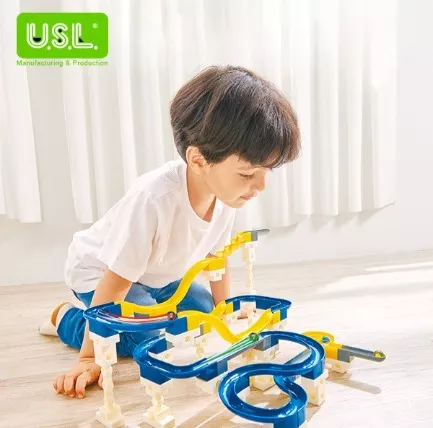Educational Toys for Children: Key Selection Insights Revealed!
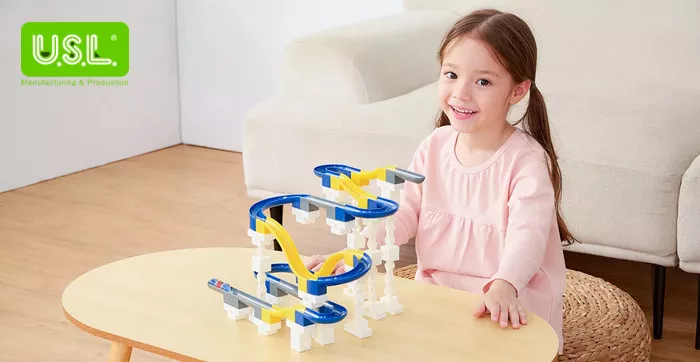
Age Appropriateness
The foremost consideration in selecting toys should be their suitability for the child's age. Here are some guidelines to help parents choose wisely across different age groups:

For newborns to two-year-olds learning to grasp:
✔ Brightly colored, soft-textured cloth books and teething toys are excellent choices.
✔ Opt for non-toxic toys free from harmful chemicals.
✔ Prefer toys without sharp edges and of a size that minimizes choking hazards.
✔ Ensure the toy material is safe, durable, and not prone to breakage.
✔ Toys with various textures stimulate babies' visual, tactile, and auditory senses.
✔ Promote motor development with graspable toys like appropriately sized blocks or construction toys, enhancing hand muscle and coordination skills.
✔ Avoid toys with small parts to prevent choking risks.
✔ Choose washable and easy-to-clean toys, as babies frequently put toys in their mouths.
✔ Simple and engaging toys offer babies fun learning experiences.
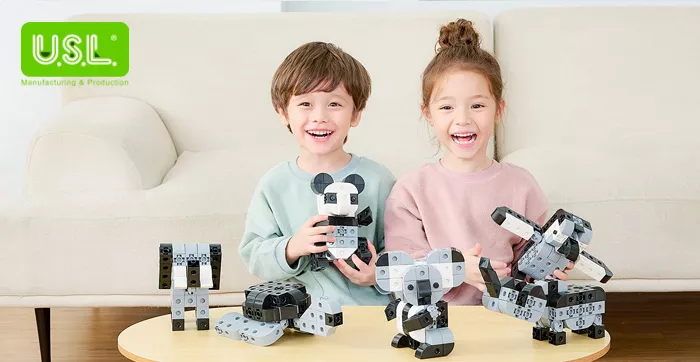
For children aged 3-6: Puzzles, building blocks, and basic science experiment kits develop spatial and logical thinking.
Enhance cognitive development:
Enhance cognitive development with simple puzzles, matching games, and basic numeral and alphabet learning toys.
Toys that improve hand-eye coordination and fine motor skills:
Toys that improve hand-eye coordination and fine motor skills, such as blocks, beads, coloring books, and simple craft materials.
Stimulate imagination and creativity:
Stimulate imagination and creativity with role-playing games, simple construction sets, and art materials.
social and emotional development:
Support social and emotional development with cooperative games, pretend play sets, and storybooks.
Promote language and communication skills:
Promote language and communication skills with storytelling dolls and role-playing games.
✔ Avoid toys with small parts to prevent choking risks.
✔ Choose washable and easy-to-clean toys, as babies frequently put toys in their mouths.
✔ Simple and engaging toys offer babies fun learning experiences.

For children aged 3-6: Puzzles, building blocks, and basic science experiment kits develop spatial and logical thinking.
Enhance cognitive development:
Enhance cognitive development with simple puzzles, matching games, and basic numeral and alphabet learning toys.
Toys that improve hand-eye coordination and fine motor skills:
Toys that improve hand-eye coordination and fine motor skills, such as blocks, beads, coloring books, and simple craft materials.
Stimulate imagination and creativity:
Stimulate imagination and creativity with role-playing games, simple construction sets, and art materials.
social and emotional development:
Support social and emotional development with cooperative games, pretend play sets, and storybooks.
Promote language and communication skills:
Promote language and communication skills with storytelling dolls and role-playing games.
safe of sturdy:
Ensure toys are safe, without small parts or sharp edges, and made of sturdy, durable materials suitable for preschoolers.
Choose toys that encourage family:
Choose toys that encourage family interaction, like board games and interactive learning games, fostering bonding and learning.
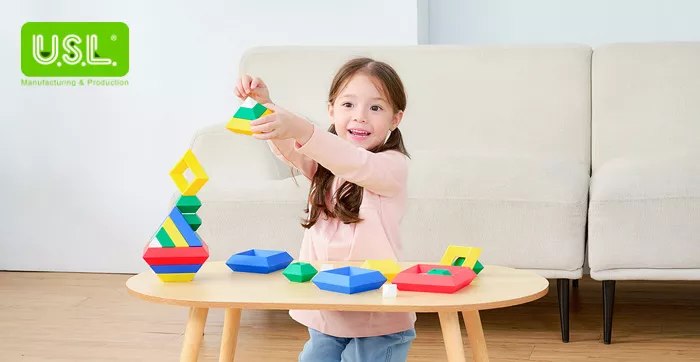
With over thirty years of experience in designing, developing, and manufacturing educational toys, we emphasize the following criteria for selecting suitable toys for children:
Age Suitability:
This is always the primary consideration. For infants, opt for brightly colored, soft cloth books and teething toys. For children aged 3-6, puzzles, blocks, and simple science kits are excellent for developing spatial and logical skills.
Toy Safety:
Safety is paramount. Choose non-toxic toys without sharp edges, made from durable materials, and avoid those with small parts that could pose choking hazards, especially for younger children.
Educational Value:
Educational toys should foster curiosity and exploration. Select toys that cultivate skills in language, mathematics, science, and art. For example, toys featuring numbers and letters can enhance language skills, while those with rich colors or buildable components can boost creativity.
Long-lasting Engagement:
Prefer toys that can adapt and offer increased complexity or varied play as the child grows, maintaining interest over time and aiding in the development of new skills at different stages.
Family Interaction Promoters:
Educational toys are excellent tools for family interaction. Opt for games that allow multiple players, like puzzles and role-playing games, enhancing family bonds and cooperative play.
By integrating professional and SEO-friendly language, this article provides parents with comprehensive insights into selecting the best educational toys for their children, emphasizing the importance of age-appropriateness, safety, educational value, enduring appeal, and the promotion of family interaction.
Ensure toys are safe, without small parts or sharp edges, and made of sturdy, durable materials suitable for preschoolers.
Choose toys that encourage family:
Choose toys that encourage family interaction, like board games and interactive learning games, fostering bonding and learning.

With over thirty years of experience in designing, developing, and manufacturing educational toys, we emphasize the following criteria for selecting suitable toys for children:
Age Suitability:
This is always the primary consideration. For infants, opt for brightly colored, soft cloth books and teething toys. For children aged 3-6, puzzles, blocks, and simple science kits are excellent for developing spatial and logical skills.
Toy Safety:
Safety is paramount. Choose non-toxic toys without sharp edges, made from durable materials, and avoid those with small parts that could pose choking hazards, especially for younger children.
Educational Value:
Educational toys should foster curiosity and exploration. Select toys that cultivate skills in language, mathematics, science, and art. For example, toys featuring numbers and letters can enhance language skills, while those with rich colors or buildable components can boost creativity.
Long-lasting Engagement:
Prefer toys that can adapt and offer increased complexity or varied play as the child grows, maintaining interest over time and aiding in the development of new skills at different stages.
Family Interaction Promoters:
Educational toys are excellent tools for family interaction. Opt for games that allow multiple players, like puzzles and role-playing games, enhancing family bonds and cooperative play.
By integrating professional and SEO-friendly language, this article provides parents with comprehensive insights into selecting the best educational toys for their children, emphasizing the importance of age-appropriateness, safety, educational value, enduring appeal, and the promotion of family interaction.
Recommended articles
➤ What are construction blocks?
➤ What is a learning clock? What can children learn from using a learning clock?
➤ How to Choose the Right Educational Toys for Different Ages and Interests?
➤ How to Spark Children's Interest in Educational Toys?
➤ Enhancing Parent-Child Interaction Through Educational Toys
➤ Maintenance and Cleaning Tips for Educational Toys
➤ What is a learning clock? What can children learn from using a learning clock?
➤ How to Choose the Right Educational Toys for Different Ages and Interests?
➤ How to Spark Children's Interest in Educational Toys?
➤ Enhancing Parent-Child Interaction Through Educational Toys
➤ Maintenance and Cleaning Tips for Educational Toys
Recommended products

